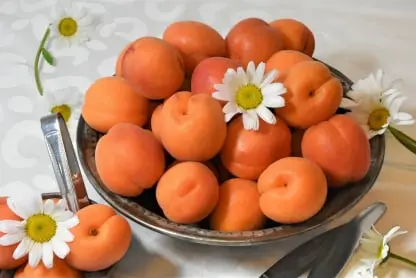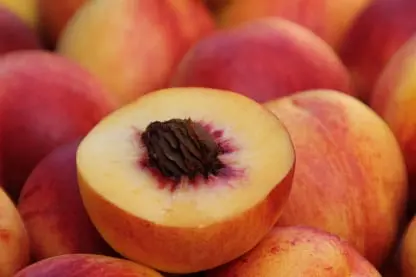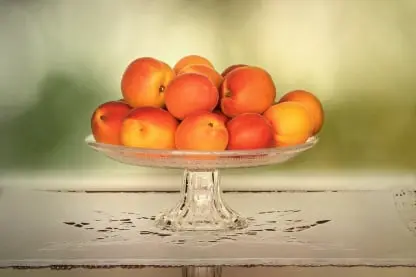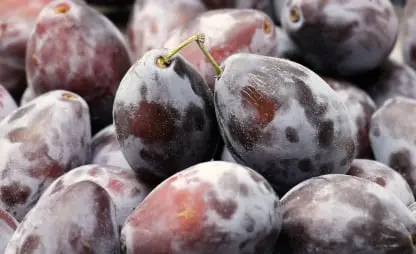Stone fruit packing app:
Stone fruit packing app for packers of fresh stone fruit for domestic and export, stone fruit wholesale. Full stone fruit inventory, QC, orders, invoices, 100% accurate stone fruit shipping. Faster stone fruit packing.

Stone fruit Packing App 100% production & order shipping
View Packing App Specifications.
The grading and packaging of stone fruits can be organised into direct packaging or as two-stage work (pre-sizing and packaging) for annual volumes of between 100 and 15,000 tonnes.
Furthermore, processing the packaging of peaches with four colours (peach, nectarine, white and yellow), a multitude of packages, and orders for same-day delivery make the task complex.
Anticipating the grading and packaging in order to honour customer orders means taking major financial risks. Two-stage working helps you to meet demand more efficiently.
Backed by its experience, MAF RODA AGROBOTIC has invested heavily in producing sensors for colour, diameter, external defects and internal defects specific to stone fruits. The electronics installed on the fruit conveyors are not standard: they are genuinely dedicated to stone fruits. The key challenge for pre-sizing and grading lies here: sorting better so as to sell better and manage costs better. In this context, and when there are large volumes to market, the pre-sizing of stone fruits simply goes without saying.

Stone fruit packing app manages food safety, audits, recalls
Packaging fresh fruits and vegetables is one of the more important steps in the long and complicated journey from grower to consumer. Bags, crates, hampers, baskets, cartons, bulk bins, and palletized containers are convenient containers for handling, transporting, and marketing fresh produce. More than 1,500 different types of packages are used for produce in the United States and the number continues to increase as the industry introduces new packaging materials and concepts. Although the industry generally agrees that container standardization is one way to reduce cost, the trend in recent years has moved toward a wider range of package sizes to accommodate the diverse needs of wholesalers, consumers, food service buyers, and processing operations.
Packing and packaging materials contribute a significant cost to the produce industry; therefore it is important that packers, shippers, buyers, and consumers have a clear understanding of the wide range of packaging options available. This factsheet describes some of the many types of packaging, including their functions, uses, and limitations. Also included is a listing, by commodity, of the common produce containers standard to the industry.

Stone fruit Packing App for reduced food & fresh produce waste
Tender fruit harvest has started, and as packing lines are getting prepared for the upcoming season, there are a variety of things that growers should consider when getting their packinghouses prepared for production.
Table of Contents
Cold storage
Preparing the packing line
Monitoring and Cleaning Packing Lines
COVID-19
References and Further Reading:
Cold storage
Preparing for the season involves making sure that coolers and equipment are in working order. Inspections should occur regularly to make sure the cold storage is clean, and the cooling equipment is functioning properly. Cold storage units should be kept at temperatures around 0° C as higher temperatures (4-8 °C) can reduce fruit quality.Cold air can leak out of improper seals, so replace entry curtains and door seals before the season begins.
Preparing the packing line
The packing line is an important part of the peach packinghouse. All surfaces on the packing line should be free of corrosion. If corroded surfaces are found, they should be replaced or refinished. Removing corrosion early prevents larger, more expensive problems. Maintain the packing line during the entire season.
Cleaning the packing line thoroughly before starting it can help minimize food safety risks and make it easier to clean the line during the season. Any new brushes or foam rollers should be thoroughly cleaned prior to use. Run rollers prior to running produce for packing. It’s also a good idea to wet the rollers while they are running to leach out any contaminants present within the foam.

Stone fruit packing app manages supplier food quality and traceability
Stone fruits respire at a higher rate and are soon perishable when kept at room temperature. Apart from the deterioration caused due to ripening activity, the stone fruits are also notified as delicate fruits due to their smooth peel which gets bruised immediately by impact or friction. The management of these two major factors can help in the regulation of physiological, biochemical and pathological activities of stone fruits. Packaging and storage are considered as major criteria to be taken into consideration in managing fruit deterioration. The recent scientific developments in the field of packaging and storage have brought new innovative process and recommendations which can enhance the storage/shelf life of stone fruits as well as maintain the quality for a longer period. The commodity packed gets the better acceptance by the consumer as it reduces the bruising caused at various stages of the supply chain and provides the produce at convenient sizes and packs required, whereas the storage ultimately keeps the fruits with maximum quality and availability for an extended period. The packaging and storage can be complementary to each other when the stakeholder at each stage of the supply chain knows what type of package is more suitable for a certain type of storage conditions and vice versa. In this chapter, we tried to pool up the scientific information and recommendations which can suit different stakeholders in using a varied type of packaging and storages for stone fruits. The packaging and storage of stone fruits such as mango, plum, peach, apricot, sweet cherry, litchi, almond and dates, covering all the three major climate zones, are discussed in this chapter.